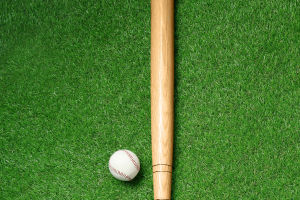Tennis is a sport with a long history.
Its rules are relatively simple, but the details involved can be quite complex.
The basic forms of the game are singles and doubles. In singles, two players face off on the court, while in doubles, each team consists of two players.
Before the game starts, the players need to draw lots to determine the choice of serve and court, usually by tossing a coin. The serve is the starting action of the game.
The server must stand behind the serving area and hit the ball over the net and into the opponent's serving area. When serving, the player must make sure not to step over the serving line before the ball leaves the racket, to avoid serving errors.
The scoring method of the game is a unique feature of tennis. Each game is scored at 0, 15, 30, 40, and win, and if both players reach 40 points, they will enter the "deuce" stage. In this stage, either side can win the game if they win two points in a row.
After a certain number of games, the players will move on to the next set, which usually consists of three or five sets, depending on the nature of the game. For example, Grand Slam games are usually five sets, while other games maybe three sets.
The winner needs to win at least six games in each set and needs to be at least two games ahead of the opponent to win the set. If the two players are tied at 6-6 in a set, a tiebreak will be held to determine the winner.
In the tiebreak, the players need to reach seven points first and be two points ahead of the opponent to win the set. The scoring method of the tiebreak is similar to that of the regular game, but the players can take turns to serve when serving, and the right to serve is exchanged every two points.
In addition to these basic rules, various penalties will occur during the game. The referee has to maintain the fairness and order of the game, and any disputes can be resolved through the referee.
In tennis matches, players must follow the principle of fair competition. Any improper behavior, such as deliberate delay, violation of the serving time limit, or improper behavior on the court, may result in warnings, penalty points, or even disqualification.
In addition, there are strict regulations on the specifications and conditions of tennis courts. The length of the court is 23.77 meters, and the width is 8.23 meters in singles and 10.97 meters in doubles.
The height of the net is 0.914 meters in the middle and 1.07 meters at the edge. The surface of the court is made of a variety of materials, including grass, clay, and hard court, and different courts will affect the bounce of the ball and the performance of the players.
To adapt to different weather conditions, players also need to use suitable rackets and tennis balls. The tennis balls used in the game also have specific standards, usually yellow, with wool or nylon materials on the surface to facilitate use in different conditions.
During the game, players also need to abide by the clothing regulations. Although the clothing of athletes has become more diverse in modern competitions, many traditional events such as Wimbledon still require players to wear all-white clothing.
Athletes' equipment not only affects their performance but also reflects the culture and tradition of the game. In addition, the performance of players in the game may also be affected by psychological factors, so many top players will adopt various strategies to adjust their mentality and ensure that they can maintain their best condition during the game.
Although the rules of tennis seem simple on the surface, the details behind them require players, referees, and spectators to understand. Understanding these rules not only helps to better appreciate the game but also improves the competitive level of participants.
Whether you are a beginner or an experienced player, a deep understanding of the rules of tennis is the key to improving your skills, which makes this sport still full of charm and challenges around the world.


